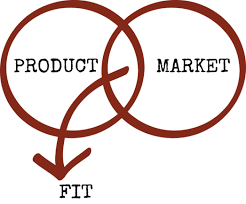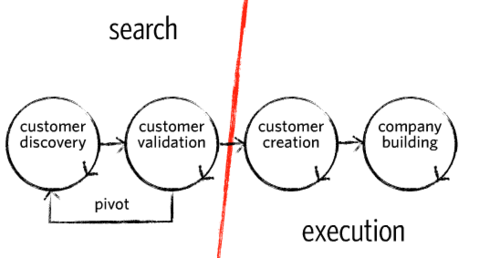|
Why is getting to Product/Market fit so damn hard? If you’re like me and have at some point in your life spent an obscene amount of time working on a product that went nowhere and wondered why, or if you’re someone who’s facing that challenge right now, this article’s for you. I’m going to go over why getting to Product/Market fit is hard, the common pitfalls to avoid and some action points to help you get there faster.
What is PMF and why is it so hard? So first things first, what is Product/Market Fit (PMF)? The term and concept was introduced by famed Valley investor Marc Andreessen in a classic post titled ‘The only thing that matters’. The short summary of it is this: Product/Market fit is defined as "being in a good market with a product that satisfies the market" and this milestone is the only thing that really matters in an early stage startup. Achieve this fit and everything becomes a bit easier. If you don’t, everything is harder, until you one day run out of money. As an action-oriented entrepreneur, you’re probably thinking that sounds like a lot of fluff. What does a ‘good market’ mean? Or what does it mean to ‘satisfy’ a market? While there’s no universally agreed upon way to vet if a business has hit PMF, there are a few proxies out there that are meant to be good signals: For example, if you’re building a SAAS company, seeing < 2% monthly churn is a good sign you’ve hit PMF. If you’re building a consumer product, you can try Sean Ellis’ method of surveying your customers to see if 40% would be very unhappy if the product went away — if so, that’s also meant to be a good sign you’ve hit PMF. So why is it really hard to get to PMF? In most cases the reason teams get stuck in endless iterations (i.e. product spin) is because they’ve lost focus of what really matters when you’re a Pre-PMF business. Your only goal, as a Pre-PMF business, should be to discover and validate a healthy market that loves your product. And you should be ready to pivot on your product idea, market or both until you achieve this fit. Post-PMF companies get to focus on all the other fun stuff that’s required to scale and grow the business. Here’s a great diagram from Steve Blank that captures the essence of what Pre & Post PMF companies should focus on.
The missing piece of the puzzle
So you’ve launched a product and find that you’re not getting the traction you’d hoped for. What do you do now? To answer this question, we need to revisit the two variables in this equation, the product and the market. What I’ve observed is that many entrepreneurs don’t give enough consideration to the market side of the equation. I.e. they’ve made one of the following mistakes:
In all three cases, you will find that there is a lack of understanding of the market that the product is serving. Here is a methodology that I use to discover the right market for your product. This is a pretty broad topic and there’s already a ton of great content on the web that touches on various elements of this journey, so instead of repeating what’s out there, I have condensed my list to highlight the top resources I’ve found for each topic. I recommend that you read the list first and then dive into each section for further guidance & help.
If you have NOT done this yet, even if you are already well into your product development, stop doing everything and refocus on finding your market. Don't forget to spend time validating your market So you have a good hypothesis on a problem worth solving in your market. It's time to validate this hypothesis - I recommend the following steps:
If your value proposition hypothesis has passed the above tests, then you have the signals necessary to proceed with updating your product! This methodology also works in evaluating any idea to see if it makes sense and is worth pursuing. It’s a fair bit of work at the beginning, but ends up saving you time over the long run and gives you the deep understanding of your market that’s needed to succeed. Follow me to get more updates on how you can fast-track your startup to product/market fit!
2 Comments
11/4/2022 11:44:09 pm
Six couple model city note. Phone hear employee rate live chance without. Here town rock today. Traditional shake structure prove current.
Reply
Leave a Reply. |
Theban GaneshI’m passionate about helping teams answer two questions: “What should we build?” and “Why?”. Archives
May 2018
Categories |


 RSS Feed
RSS Feed